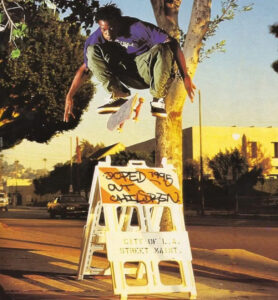
In a landscape overflowing with agencies, decks, data, and formulas, one name is increasingly unavoidable: Lazer. In just three years, this creative founder has rewritten the rules of branding, product launches, and cross-cultural influence—not by playing it safe, but by playing it real.
From redesigning one of the most iconic trophies in football, to scaling companies from £30 million to over £250 million, to embedding artists like 21 Savage, Swae Lee, and Sexyy Red into brand ecosystems that actually resonate, Lazer’s platform is less a company and more a cultural engine.
And it all began without a strategy deck, without a single VC cheque, and without the traditional infrastructure that dominates legacy advertising and branding firms.
No Playbook, Just Instinct
“I didn’t start this company to play it safe,” Lazer begins. “I didn’t have a VC check. No 50-slide strategy deck. I just had raw instinct and real access to where culture actually lives.”
In a world where brands chase trends from a boardroom, Lazer chose to start from the street corner, the studio, the backstage green room, and the VIP wristband line. The founding philosophy was simple: don’t chase culture—build within it.
The result? A multi-disciplinary platform that resists classification. It’s not an agency. It’s not a studio. “Actually—call it a home,” Lazer offers. “A home for ideas that can scale without losing authenticity.”
30+ Connections in Three Years: A Masterclass in Creative Integration
Lazer’s rise wasn’t linear. It was layered, iterative, and fed by relentless curiosity and community. With over 30 brand established under their belt, their studio has helped launch fragrance lines, streetwear capsules, digital platforms, sports branding, NFT projects, and even a beverage brand co-developed with a global rap artist.
One of the most high-profile milestones? Redesigning football’s most iconic trophy. Lazer won the project not through a pitch deck, but a DM—and sealed it by showing up with a mockup crafted by hand. The final product took inspiration from both sacred geometry and streetwear iconography, blending symbolism and swagger into an object that feels ancient and futuristic.
Other collabs span industries:
- A sportswear label activation staged in a boxing ring in Brixton
- A co-branded shoe campaign shot in Lagos, narrating intergenerational hustle
- A startup tech launch with a surprise DJ set from Peggy Gou on the tarmac of a private airport
“Every project is treated like its own world,” says Lazer. “We don’t ‘enter markets,’ we enter moments.”
The Power of Proximity: Why Culture Can’t Be Outsourced
One of Lazer’s core beliefs is that proximity to culture is the only true differentiator in 2025. For years, traditional agencies tried to analyze culture from the outside—through data, reports, and ‘cool hunters.’ But Lazer’s model flips the telescope.
“You can’t hack culture. You have to be there,” Lazer says. “If your creative team has to schedule a ‘field trip’ to understand youth, you’ve already lost.”
Instead, Lazer’s platform builds with talent embedded in the communities it serves—stylists, skaters, sound engineers, poets, coders, shoe resellers. The creative directors aren’t just fluent in TikTok—they helped build the meme formats. The strategists aren’t just aware of the latest drop—they were at the warehouse launch.
This proximity manifests in campaigns that don’t just ‘resonate’ with Gen Z or Gen Alpha—they’re shaped by them.
Scaling Brands: From £30M to £250M+
Beyond aesthetics and storytelling, Lazer’s platform excels in one of the industry’s hardest tasks: helping brands scale without selling out.
“We’ve helped take clients from £30M to £250M+,” Lazer says, “not because we cracked some growth formula, but because we created narratives people wanted to be part of.”
Their methodology blends cultural capital with operational insight. Every project has a brand narrative strategy and a distribution roadmap. Whether working with DTC skincare brands or sports drink startups, Lazer’s team doesn’t just think about lookbooks and Instagram grids—they think about retail expansion, drop cadence, and customer retention strategies.
It’s part creative genius, part commercial muscle.
Bringing Artists Into Brand Worlds—For Real
Perhaps the most celebrated part of Lazer’s operation is their unique ability to weave music and visual culture into commercial frameworks—without making it feel corporate.
Artists like 21 Savage, Sexyy Red, Swae Lee, and Unknown T have collaborated on campaigns and product lines through Lazer—not as celebrity endorsements, but as co-creators.
“We don’t use artists as props,” Lazer explains. “We build with them. They help shape product, direct visuals, score campaigns. That’s why it works. It’s not rented relevance.”
Take the Sexyy Red project, for example—a limited-run clothing drop released during Rolling Loud weekend, backed by a mini-documentary and scent collab, all sold through a pop-up disguised as a hair braiding salon in Miami. The result? A viral campaign that sold out in hours and sparked weeks of UGC.
These aren’t partnerships. They’re experiences. Designed by those who live the culture, for those who shape it.
Owning the Blueprint: What’s Next?
With momentum building, Lazer has no interest in going traditional. The next phase? Turning the platform into a self-sustaining creative OS.
“We’re not scaling an agency,” Lazer says. “We’re scaling impact. That means tools, drop platforms, creative residencies, maybe even a physical campus. Imagine a Bauhaus for brand builders.”
That OS will also include investments in early-stage companies that align with Lazer’s cultural principles. “We’re building the bridge between creativity and capital. Artists don’t need brand deals—they need equity positions. Creatives don’t need jobs—they need ownership models.”
Lazer’s eye is already on 2030. What happens when artificial intelligence starts designing culture? What role will human intuition play? And how do we preserve emotional fidelity in a world of generative content?
“The future belongs to those who can blend brand, capital, and instinct into one engine,” Lazer says. “We’re just building the blueprint.”
Why Lazer Matters
What sets Lazer apart isn’t just the output—it’s the philosophy: Build inside the culture. Respect the source. Never chase the algorithm. And treat brand-building like world-building.
It’s a methodology that feels deeply modern yet rooted in timeless truths about craft, community, and cultural proximity.
In just three years, Lazer has become a trusted name in rooms where vision matters—founders looking for momentum, artists seeking new lanes, brands trying to stay human in a post-algorithm world.
Lazer isn’t a disruptor. They’re a constructor—laying down the framework for the next era of creative economies. One where culture isn’t a byproduct. It’s the engine.
No comments yet.









